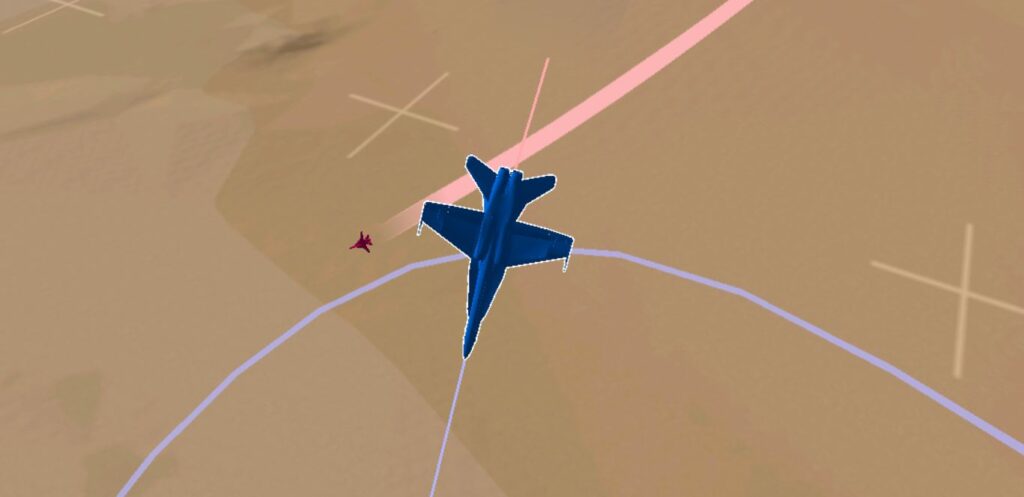
It is an undeniable fact that your velocity vector is 90 degrees off your lift vector. This relationship is a critical piece of the BFM puzzle. Quite often, you will see very complex explanations of maneuvers with fancy names. The truth is they all boil down to a very simple process.
Put the lift vector where it needs to be by rolling and pull to put the velocity vector there. With only a couple notable exceptions, everything you do in BFM will follow this pattern. The key is is to know where to put the lift vector, when and how hard to pull.
The previous post discussed pursuit curves which involve placing the velocity vector ahead, on or behind the target to establis lead, pure or lag pursuit. We will use the same terminology for the lift vector.
“Put the lift vector in Lead” means roll to place your lift vector at a point in front of the target. “Put the lift vector in Lag” means to roll to put the lift vector behind the target. No one will say to put the lift vector in Pure. Instead they will say “Put the lift vector on the bandit(target)”.
This may seem a bit confusing but a picture is worth a thousand words.
Here is the lift vector in lead pursuit in anticipation of the pull for a lead turn at the merge.

Next we will have the lift vector on the bandit as we barrel roll around him in a horizonal rolling scissors.

The final example is the lift vector in lag as we try to force the bandit to overshoot.

Here is a video of the the above fight for some context.